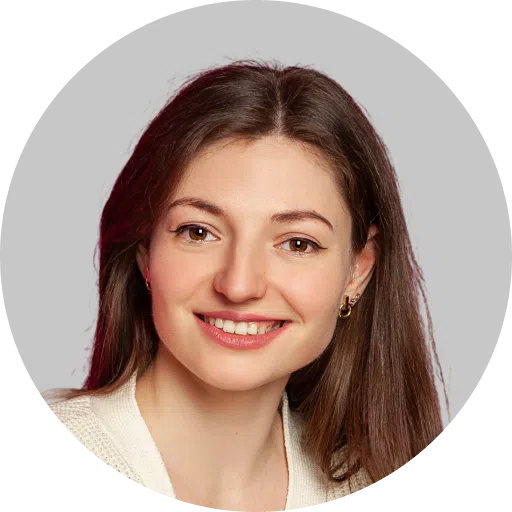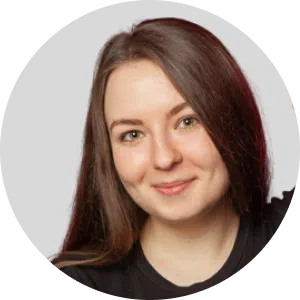Healthcare Apps: Development Cost & Features
Digitalization contributes to progress in almost all areas, including the healthcare system. Introduction of digital solutions for more effective health protection is caused not only by the convenience of interaction between patient and doctor, but also by global challenges such as Covid-19.
Since the beginning of the pandemic, users have started downloading medical applications by 60% more, with the Healthcare apps market of at least $45 billion. According to forecasts, by the end of this year, the figure will exceed $100 billion. Read about the features of developing a mobile medical application below.
Types of healthcare apps
Let's view the types of existing Digital Health apps. The required functionality and the development cost will depend on the type of application.
- Electronic health records apps (EHR)
- Electronic prescription apps (ePrx)
- Web and mobile applications for appointment with a doctor (Appointment scheduling)
- Systems for processing and storing medical images (PACS)
- Hospital management systems (HMS)
- Health tracking applications
- Telehealth platforms
- Management information systems (MIS)
Electronic health records apps (EHR)
The need for such applications is dictated by the expansion of the company's capabilities and the need to store and process data. With EHR, the process of storing a huge array of patient data is simplified, and doctors get instant access to medical records and are ready to provide immediate assistance to patients.
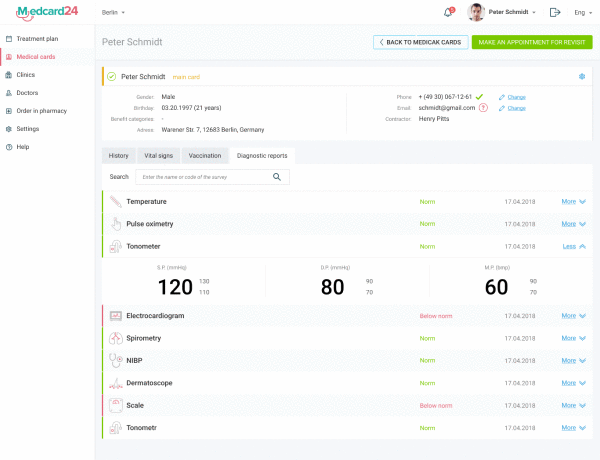
Electronic prescription apps (ePrx)
This sort of application allows patients to obtain an electronic prescription for controlled substances. Physicians issuing electronic prescriptions for controlled substances must use a software application that meets all requirements of the Drug Enforcement Administration (DEA). EPCS (electronic prescribing of controlled substances) has many benefits, such as improved patient safety and workflow efficiency and fraud prevention.
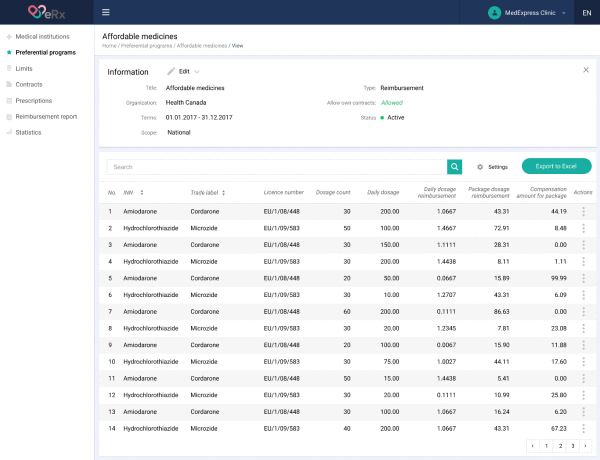
Web and mobile applications for appointment with a doctor (Appointment scheduling)
The main function of such applications is to search for a doctor and make an appointment with him/her. The application allows you to see the doctor's available days and hours. Some applications can sync with the patient's calendar and send additional reminders of an upcoming appointments.
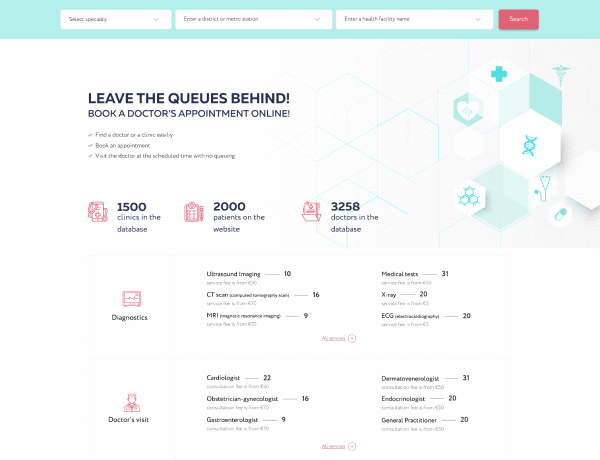
Systems for processing and storing medical images (PACS)
The use of PACS (Picture Archiving and Communication System) eliminates the need to manually register and store, receive and send confidential information, snapshots, and reports. Instead, medical records and images can be securely hosted on off-site servers and accessed from virtually anywhere in the world using PACS software, workstations, and mobile devices.
Hospital management systems (HMS)
The hospital management system is a computer system that helps manage healthcare-related information and enables healthcare professionals to do their jobs efficiently. They manage data related to all healthcare departments, such as pharmaceuticals, materials, finance, radiology, etc.
HMS assists in solving the problems associated with managing all the paperwork of each patient related to various departments of the hospital confidentially.
Health tracking applications
A health tracker is an electronic application used to record and maintain healthy lifestyle statistics and to measure progress, i.e., it is a way to put all your data together and form a picture of your overall lifestyle, be it healthy or not. For example, DiaHero — a mobile application for diabetes management. The app is a handy medical "journal" for a diabetic, which allows patients to keep track of blood sugar levels, record the content of each meal with automatic calculation of its bread units, and calculate the required insulin dose.
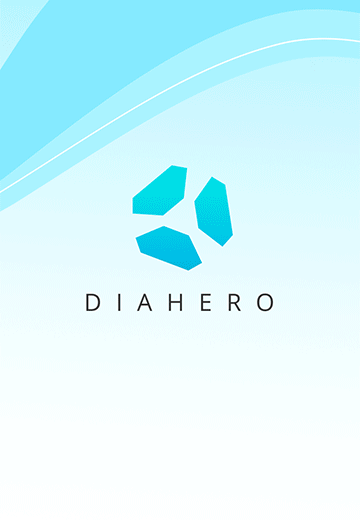
Telehealth platforms
Telehealth programs allow patients to reduce visits to medical facilities, which is convenient for both users and doctors. Telehealth is a broader concept than telemedicine, combining video consulting programs, store-and-forward solutions, and remote patient monitoring.
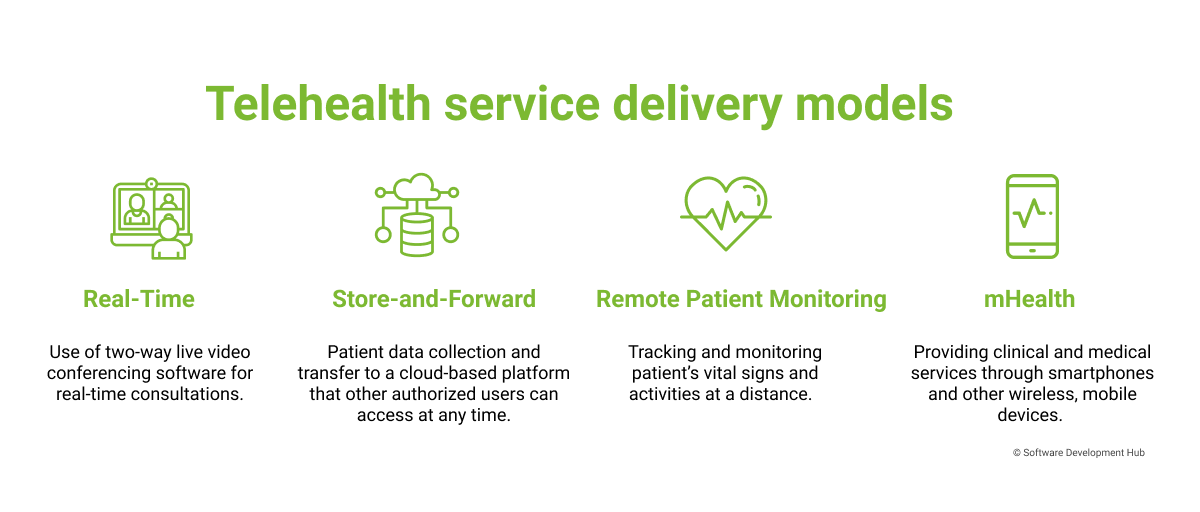
Read more: Telemedicine Web & Mobile App development: Cost and Process
Management information systems (MIS)
A management information system (MIS) is used to store information, and process and retrieve data to improve the services provided by an organization. They can be used by all healthcare professionals, from patients to physicians. They collect data and compile it so that it can be used to make health decisions.
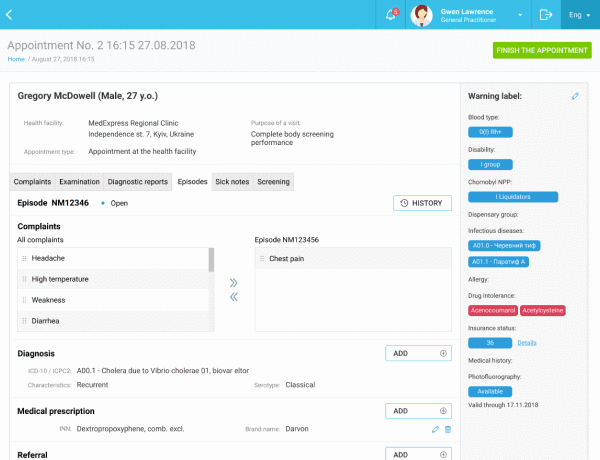
Apps for patients and healthcare professionals
It is conditionally possible to divide Healthcare Apps into those used by patients and doctors, and medical institutions. If you are going to develop an application for patients, please note that the content should be designed for a wide audience, be accessible and clear for all patients without deep knowledge in the field of medicine. As a rule, the development of such applications is cheaper.
Conventionally, the entire pool of applications for patients can be divided into several groups, depending on the functionality and tasks that the product solves:
- fitness and wellness apps;
- mental health programs apps(including meditation);
- self-diagnosis apps;
- applications for the care of the elderly and sick people;
- diaries of patients' well-being with fixation of vital data (blood pressure, pulse, glucose, cholesterol levels);
- health management programs (calorie calculation, hydration control, dietary advice);
- applications for pregnant women;
- women's health products apps;
- telemedicine and video consultations;
- drug administration.
The application for medical professionals will be more specific and narrowly focused product for qualified medical personnel. Such applications are aimed at helping healthcare professionals facilitate and improve patients' care. When developing, it is important to ensure compliance with strict standards and requirements in healthcare. As a rule, developing such an application will be more expensive due to the specifics.
Understanding the functioning of healthcare mobile app
The operation of a practical mobile application is impossible without taking into account some crucial points:
- the purpose of the program determines the functions and capabilities of the mobile application. For example, for communication with patients, video chat, sending digitized prescriptions, notifications of a visit to the doctor, etc. can be used;
- supported devices and mobile platforms. Coverage of platforms for smartphones and support for certain versions of devices affect the number of downloads, and correspondence of application functionality to the target audience;
- the implementation of certain functions depends on the number of integration points. So, to send notifications, you need a Google calendar, etc.
What are the key features of a healthcare mobile app?
The functions of healthcare applications may vary, but their purpose remains the same. Mobile medical applications' benefits make life easier for patients and doctors and help with hospital management. The development of applications for hospitals and clinics is aimed at implementing the following features and peculiarities of the program:
- Monitoring health indicators — height, weight, glucose, cholesterol, blood pressure, etc.
- Scheduling — the ability to make an appointment at any convenient time and place, instead of making phone calls.
- Alerts and reminders. It is easy to forget about visits to the doctor, scheduled at large time intervals. For this, reminders and pop-up notifications are provided.
- Personal profile, completed by the patient. Anthropometric data and biomarkers for health monitoring are entered into the columns.
- Chat and communication. The possibility to exchange text or voice messages between the patient and the doctor simplifies the identification of symptoms and diagnosis.
- The possibilities of telemedicine. Video chat often replaces an offline consultation with a doctor and avoids infection, for example, in a pandemic.
- Geolocation for finding a trusted specialist in your area or region of residence.
- Storage of files and patient data (electronic prescriptions, ECG results, doctor's reports, etc.).
- Ensuring the security and confidentiality of stored data.
- Integration with mobile devices such as Apple Watch, social networks, etc.
- Search for a doctor by last name, specialization, location, etc.
- Ratings and reviews.
- Payments.
Tech stack required to develop outstanding healthcare mobile app
The choice of certain technologies depends on the product's scalability — the number of users, the frequency of requests, the volume of payments, etc. To create mobile applications, we use Flutter, Swift, Objective C, Kotlin, Java, depending on the chosen platform Android, iOS, or both. For web applications, our team uses Django/Python for the backend and Javascript, React, Vue.js for the front. Our specialists consider each case individually to find the optimal solution to the client's request.
What the medical app development costs are
It is difficult to define the exact cost of developing a medical application, which is explained by the presence of different types of programs and their functionality. One needs to be aware that the creation of a Healthcare app does not involve expenses for obvious work tasks such as UI / UX design or frontend/backend development only. Planning and researching the market, evaluating further expenses, and testing the application after the launch require additional financial injections. During market research, a group of specialists finds out what type of application and what capabilities you need. Monetary expenses also accompany the deployment and testing of the system. All these expenses are called soft, that is, those that are spent on implementing preparatory work, correcting errors, etc.
Regarding the terms of writing, they also depend on the case. The minimum time allocated to it is from 3 months to six months, which averages up to 10 months. If we are talking about developing a complex medical application with advanced functionality, it will take even more time.
|
Cost for Software by Type |
Filling |
Average Cost |
Amount of Time Allocated |
|
For simple software development |
Functional MVP, basic interface, 1 platform |
$40 000 - $120 000 |
2-3 months |
|
For medium-complexity software development |
Comprehensive functions, specific interface, 1 platform |
$120 000 - $200 000 |
3-6 months |
|
For a comprehensive app |
Advanced high-level features, custom-designed interface |
$200 000 - $300 000 |
6-9 months and more |
Due to the growing popularity of online medicine around the world, mobile applications are a promising niche for investment. The Software Development Hub team has had vast experience of building iOS and Android mobile applications, especially in the field of healthcare. By contacting us, you are going to get a full cycle of product development: from design and business analysis to quality control and project support.
Due to the growing popularity of online medicine worldwide, mobile applications are a promising niche for investment. The Software Development Hub team has had vast experience building iOS and Android mobile applications, especially in the healthcare field. By contacting us, you are going to get a full cycle of product development: from design and business analysis to quality control and project support.
Empower your app planning with our software cost calculator.
Categories
About the authors
Share
Need a project estimate?
Drop us a line, and we provide you with a qualified consultation.
